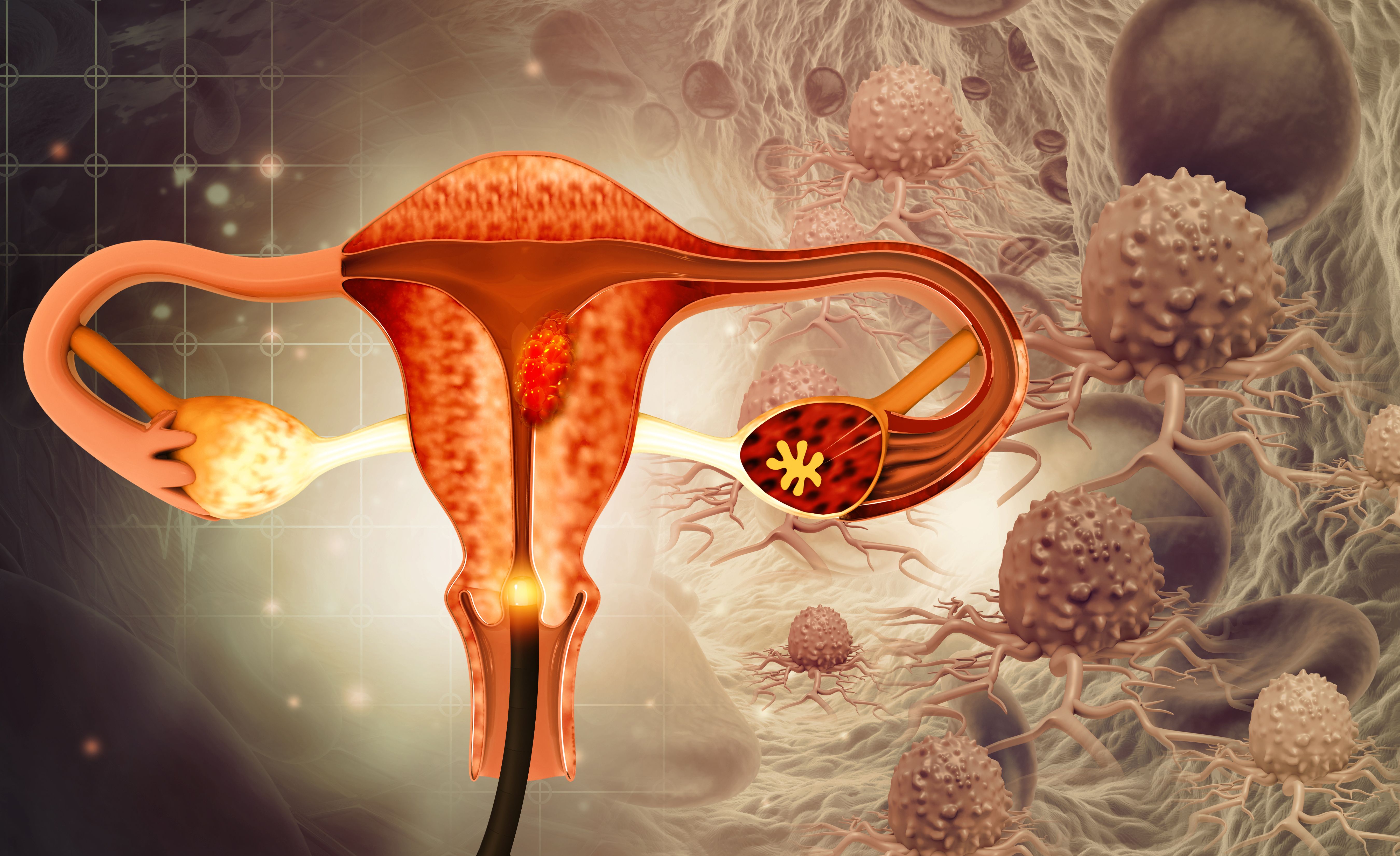PFS Improvements Seen With Selinexor in Endometrial Cancer Subgroup
Selinexor maintenance therapy shows potential in bettering survival compared with placebo in patients with TP53 wild-type recurrent or advanced endometrial cancer.
Uterus cancer and endometrial malignant tumor as a uterine medical concept. 3D illustration: © Crystal Light - stock.adobe.com

Selinexor (Xpovio) maintenance therapy demonstrated an improvement in median progression-free survival (PFS) in patients with advanced or recurrent TP53 wild-type endometrial cancer, according to findings from a pre-specified exploratory subgroup analysis of the phase 3 SIENDO study (NCT03555422) presented at the International Gynecologic Cancer Society Annual Meeting in Seoul, Korea.1
Previously, findings from the primary analysis of the SIENDO study in patients with advanced or recurrent endometrial cancer led to improvements in median PFS for the intent-to-treat (ITT) population, but results were not clinically meaningful. Findings from an exploratory analysis of 113 patients with wild-type endometrial cancer treated with selinexor (n = 77) or placebo (n = 36) as maintenance therapy, however, demonstrated a promising efficacy signal.
As of the data cutoff date of September 1, 2023, the PFS in the subgroup analysis of patients with TP53 wild-type endometrial cancer was 13.7 months compared with 3.7 months with placebo. While survival data are still immature, median overall survival (OS) was not reached after a median follow-up of 28.9 months (HR, 0.76; 95% CI, 0.36-1.59). OS in the ITT group was not reached in the selinexor arm compared with 35 months in the placebo arm after a median follow-up of 31.6 months (HR 0.57; 95% CI, 0.24-1.35).
"Given the unmet need that remains for patients whose disease is pMMR, I'm excited by the results demonstrating an encouraging, preliminary trend in OS, coupled with signals of improvement in disease progression," said Giovanni Scambia, MD, oncology gynecologist at MITO and Fondazione Policlinico Universitario A. Gemelli IRCCS, Rome, Italy.1 "These results highlight the potential opportunity to further personalize therapies and provide a strong rationale to further evaluate selinexor as maintenance therapy in TP53 wild-type endometrial cancer in the ongoing phase 3 trial".
Gynecologic Cancer Illustration: © Crystal Light - stock.adobe.com

No new safety signals were identified as of the data cut-off date. Treatment-emergent adverse events (TEAEs) in the selinexor arm included nausea (90%), vomiting (60%), thrombocytopenia (42%), and diarrhea (42%). The majority of TEAEs were grade 1-2. In the placebo arm, TEAEs were nausea (34%), vomiting (11%), and diarrhea (37%). Grade 3-4 TEAEs included neutropenia (18%), nausea (12%), and thrombocytopenia. A reported 16% of patients discontinued selinexor due to TEAEs.
"The preliminary OS data from this exploratory subset analysis of the SIENDO study corroborate the PFS results observed, which is compelling in this novel biomarker-driven population with high unmet need," said Reshma Rangwala, MD, PhD, chief medical officer of Karyopharm, said in a press release.1 "These results showcase selinexor's potential as a foundational treatment for patients with TP53 wild-type endometrial cancer. We look forward to additional data in the first half of 2025 from the company's ongoing pivotal phase 3 trial that may support [United States] and global regulatory filings."
About the Phase 3 SIENDO Trial
The randomized, double-blind, phase 3 SIENDO trial is investigating maintenance therapy with selinexor after combination chemotherapy in patients with advanced or recurrent endometrial cancer. The primary end point is PFS. The secondary end points include PFS assessed by blinded independent central review per RECIST v1.1, disease-specific survival, OS, time to first subsequent treatment, PFS after subsequent treatment, time to second subsequent treatment, and disease control rate.2
Patients in the experimental arm receive fixed doses of selinexor 80 mg or 60 mg orally on days 1, 8, 15, and 22 of a 28-da cycle. Patients are eligible for participation if they are female, aged 18 or older, have histologically confirmed endometrial cancer, completed a single line of at least 12 weeks of taxane-platinum combination chemotherapy and achieved a partial or complete remission, have primary stage IV disease, and have adequate renal, hepatic, and hematopoetic function.
REFERENCES:
1. Karyopharm announces new preliminary data in overall survival (OS) in selinexor-treated patients with advanced or recurrent TP53 wild-type endometrial cancer as part of pre-specified exploratory subgroup analysis of the SIENDO study. News release. Karyopharm. November 6, 2023. Accessed November 7, 2023. https://tinyurl.com/2zy5h3z7
2. Maintenance with selinexor/placebo after combination chemotherapy in participants with endometrial cancer [SIENDO] (ENGOT-EN5). ClinicalTrials.gov. Updated August 30, 2023. Accessed November 7, 2023. https://clinicaltrials.gov/study/NCT03555422
FDA Accepts sBLA of Dostarlimab/Chemo to Include All Advanced Endometrial Cancer
April 24th 2024The FDA accepted the supplemental biologics license for dostarlimab plus standard-of-care chemotherapy for all patients with primary advanced or recurrent endometrial cancer and set a Prescription Drug User Fee Act action date of August 23, 2024.
Read More